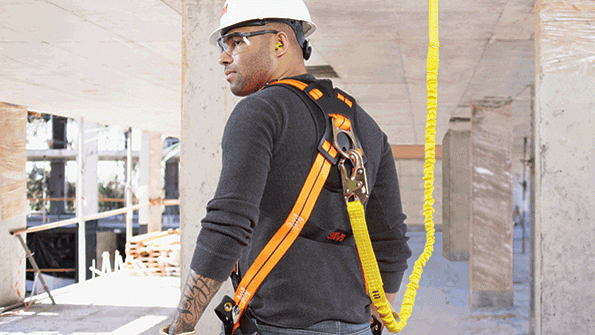
The tragic consequences of a job-site fall can have radiating effects for the victim and their family, their crew, other workers and their families, the company, the community, and the industry. A terrible accident can lead to national coverage and legal discussions. Falls are the leading cause of injuries and deaths in the construction industry, but they are preventable with the proper equipment and preparation.
Safety Harness- An Important Fall Prevention Tool
Of all the safety equipment used by construction teams, harnesses are among the mainstays for fall protection in the industry. Working at heights is an expected part of the construction industry, along with the understanding that the higher the height on jobs, the higher risk of falling. The most obvious consequence of a dangerous fall on the site is the harm that can come to the victim. There are many other consequences and costs of fall incidents on a job site, including safety penalties, lawsuits, lost time, higher insurance premiums, worker’s compensation reevaluation, and other major company expenses. OSHA reports that 40% of all job-related, elevated falls occur from heights over 10 feet, making safety harnesses essential personal protective equipment for fall protection.
Harness Facts: How They Work
To be effective in their use, all construction personnel need to understand the basics about how a safety harness works:
- Distribution of force – This is the guiding principle for avoiding additional damage from the harness when it stops the body from falling further. The old “Body Belt” type harness had the unfortunate tendency to snap the body in half with all the fall force exerted on the waist. Harnesses today distribute the force so that no one part of the body takes the brunt.
- Vital area protection – The more vulnerable and vital body areas such as the neck, groin and stomach are protected when the harness properly guides the arresting energy to the chest, upper thighs, pelvis and shoulders.
- Upright position – When the fallen employee is kept in the upright position, the spine is kept aligned vertically to better absorb the fall. It’s also the best position for quick rescue, which is critical to avoid suspension trauma, which happens after hanging for too long in any position.
- Proper fit – In order for the harness to be effective, it needs to fit the proportions, size and weight of the wearer. This also means they should have a gender-specific design since men and women have different physical proportions.
Your safety harnesses will only prove effective if your workers actually wear them and wear them correctly. A few basic tips for harness use are:
- Inspect the harness for worn, frayed, or cracked straps and webbing material. Check fasteners, d-ring and grommets and belt tongues for detachment or damage.
- With the d-ring in the middle of your back between the shoulder blades, slip the harness on like a vest.
- Pull leg straps up and fasten buckles. Stand up and adjust the body strap on the sides to leave no slack.
- Fasten and adjust the chest strap with no slack.
- Check all shoulder and leg straps to remove slack; make sure you can fit your fingers on a flat hand under your leg straps to allow for range of motion.
- Tighten the buckle straps and tuck loose strap ends into their strap retainers.

















